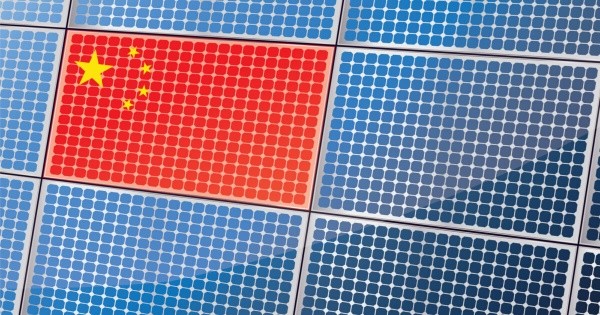The Ripple Effects of China’s Slowed Solar Module Growth on the Global Market in 2025
For the better part of two decades, China’s solar module industry has held an enviable position in the global renewable energy market. High-volume manufacturing, government incentives, and export-friendly policies helped establish China as the undisputed leader in solar panel production. However, as we move through 2025, a notable slowdown in the growth rate of Chinese module manufacturing is beginning to shift market dynamics worldwide. Below, we explore how this slowdown may reshape global competition, prices, investment trends, and the broader renewable energy landscape.

1. China’s Evolving Solar Landscape
Policy Changes and Domestic Demand
Much of China’s early solar boom was fueled by generous government subsidies and supportive policies that promoted both domestic installation and exports. In recent years, however, these subsidies have been streamlined or phased out to encourage a more market-driven approach. Additionally, as China’s industrial base matures and environmental policies evolve, the country is increasingly focused on energy storage, smart grids, and other clean technologies. While solar remains vital, these shifts contribute to more modest expansion in module manufacturing capacity compared to the heady double-digit growth rates of previous years.
Market Consolidation
Another factor contributing to the slowdown is consolidation in the Chinese solar sector. Government policies aimed at reducing overcapacity and improving quality standards have driven smaller, less efficient manufacturers out of the market. As a result, the pace of overall output growth has moderated—even if the leading manufacturers remain robust. This can have a ripple effect on global supply, affecting everything from pricing to technology transfer.
2. Global Supply and Pricing Dynamics
Tightened Supply, Potential Price Stabilization
China’s slowdown doesn’t mean the world will face an immediate panel shortage; rather, it indicates growth in supply may not keep pace with the most optimistic global demand projections. As more countries strive to meet climate targets, demand for solar modules has risen sharply. Historically, China’s mass production helped keep solar prices on a steady downward trajectory. Now, with China’s expansion less aggressive, manufacturers worldwide may see firmer pricing rather than the steep declines seen in the recent past.
Shifts in Manufacturing Geography
In response to potential supply uncertainties, other regions—such as Southeast Asia, Europe, and North America—are exploring or re-establishing their own manufacturing capabilities. Initiatives like the European Union’s solar manufacturing revival and the U.S.’s investment in domestic energy technology aim to reduce reliance on Chinese imports. By 2025, these emerging producers could claim a more significant share of the market, accelerating diversification of the global solar supply chain.
3. Technological Innovations and Quality Emphasis
Higher-Efficiency Panels
Reduced pressure to produce panels in staggering volumes may prompt some Chinese manufacturers to differentiate through research and development rather than sheer scale. High-efficiency panels based on technologies like TopCon and heterojunction (HJT) are on the rise. If China focuses on breakthroughs for premium, more advanced modules, it may lead to a two-tiered market: mainstream modules produced elsewhere and high-efficiency modules produced in China and a few other cutting-edge hubs.
Emphasis on Sustainability and Traceability
Global buyers—particularly in regions with stringent ESG (Environmental, Social, Governance) requirements—are paying closer attention to the environmental footprint of solar manufacturing. Slowed capacity growth provides an opportunity for Chinese firms to invest in greener production lines and robust traceability systems. This focus on responsible sourcing and low-carbon manufacturing could become a key differentiator in a more competitive field.
4. Opportunities for Global Players
Investments in Local Manufacturing
With some uncertainty surrounding Chinese module production, governments and private investors worldwide see an opportunity to invest in local or regional solar manufacturing. New factories, supply chain partnerships, and supportive policy frameworks (like manufacturing tax credits or tariffs on imported panels) are becoming more common. As these nascent efforts mature, we could witness a new era of decentralized solar manufacturing in 2025 and beyond.
Collaboration and Technology Transfer
China’s solar slowdown does not mean isolation from the global community. In many cases, Chinese manufacturers are forging joint ventures with international partners to set up facilities closer to end markets. This helps reduce shipping costs, shorten lead times, and meet local content requirements. For global developers and installers, these partnerships bring the best of Chinese manufacturing expertise closer to home.
5. Long-Term Implications for the Renewable Transition
Despite a moderated pace, China is still a major force in solar technology and manufacturing. The country’s vast experience and economies of scale mean it retains a central role in cost-effective solar deployment worldwide. However, the emerging trends point to a more balanced market:
- Price Stability: Less overcapacity can prevent extreme price volatility, giving solar developers and installers a more predictable cost environment.
- Diversified Supply Chains: As manufacturing options expand beyond China, solar supply chains become more resilient to geopolitical tensions and policy changes.
- Innovation Boost: With a shift toward higher-quality, more efficient panels, R&D spending could accelerate, benefiting the entire global solar ecosystem.
- Regional Self-Reliance: Countries seeking to meet ambitious climate goals can develop stronger local industries, creating jobs and stimulating economic growth.
Final Thoughts
China’s slowed module growth in 2025 marks the beginning of a new chapter in the global solar story. While the era of explosive Chinese expansion might be waning, it does not signal a retreat from the renewable revolution. Instead, it opens the door to a more geographically diverse, innovative, and resilient solar sector. For stakeholders—be they policymakers, investors, or end consumers—this evolution underscores the need to adapt to new market dynamics and seize the opportunities presented by a more balanced and interconnected solar supply chain.
In the end, the road to a sustainable, low-carbon future relies on continued collaboration, smart investments, and forward-thinking policies worldwide. And as China moderates its pace, the rest of the world stands ready to step up and ensure that solar power remains a driving force in the global energy transition.
 Large stock of systems & materials
Large stock of systems & materials